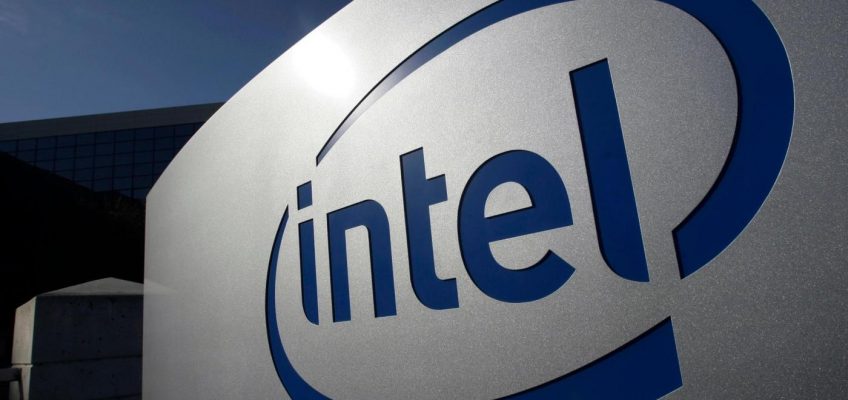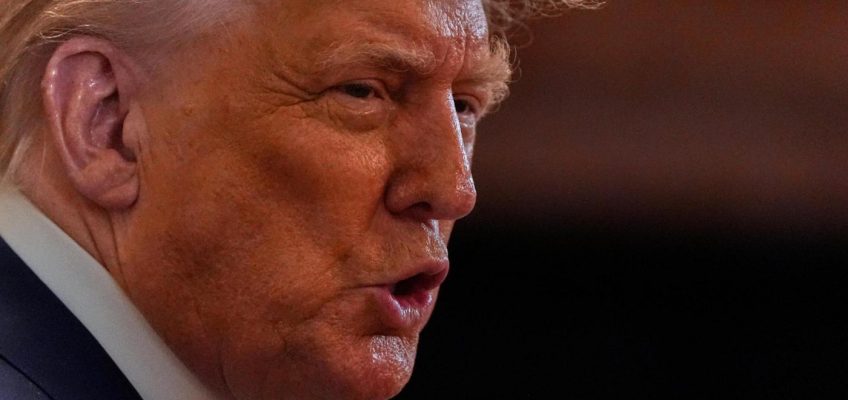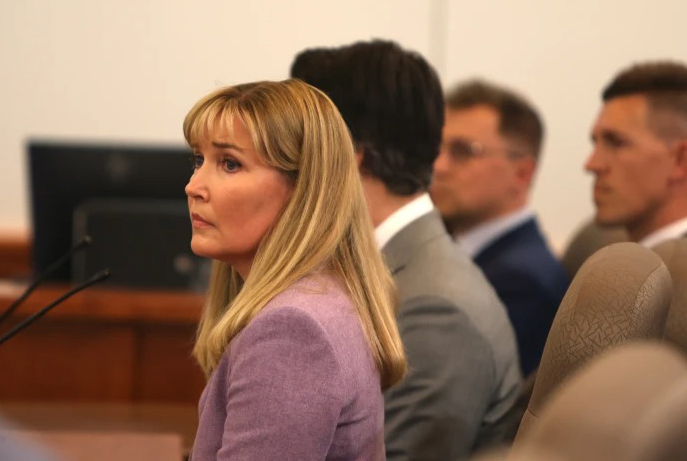BY MELISSA GOLDIN
As his administration faces mounting pressure to release Justice Department files related the Jeffrey Epstein sex trafficking case, President Donald Trump is highlighting a different criminal justice issue — cashless bail.
Epstein ex-girlfriend Ghislaine Maxwell finishes interviews with Justice Department officials
Trump administration investigates Oregon’s transgender athlete policies
In Epstein furor, Trump struggles to shake off a controversy his allies once stoked
Education Department says it will release billions in remaining withheld grant money for schools
‘Why isn’t he paying?’ Trump’s golf visit to cost Scottish taxpayers
He suggested in a Truth Social post this week that eliminating cash bail as a condition of pretrial release from jail has led to rising crime in U.S. cities that have enacted these reforms. However, studies have shown no clear link.
Here’s a closer look at the facts.
TRUMP: “Crime in American Cities started to significantly rise when they went to CASHLESS BAIL. The WORST criminals are flooding our streets and endangering even our great law enforcement officers. It is a complete disaster, and must be ended, IMMEDIATELY!”
THE FACTS: Data has not determined the impact of cashless bail on crime rates. But experts say it is incorrect to claim that there is an adverse connection.
“I don’t know of any valid studies corroborating the President’s claim and would love to know what the Administration offers in support,” said Kellen Funk, a professor at Columbia Law School who studies pretrial procedure and bail bonding. “In my professional judgment I’d call the claim demonstrably false and inflammatory.”
Jeff Clayton, executive director of the American Bail Coalition, the main lobbying arm of the cash bail industry, also pointed to a lack of evidence.
“Studies are inconclusive in terms of whether bail reforms have had an impact on overall crime numbers,” he said. “This is due to pretrial crime being a small subset of overall crime. It is also difficult to categorize reforms as being ‘cashless’ or not, i.e., policies where preventative detention is introduced as an alternative to being held on bail.”
Different jurisdictions, different laws
In 2023, Illinois became the first state to completely eliminate cash bail when the state Supreme Court upheld the constitutionality of the law abolishing it. The move was part of an expansive criminal justice overhaul adopted in 2021 known as the SAFE-T Act. Under the change, a judge decides whether to release the defendant prior to their trial, weighing factors such as their criminal charges, if they could pose any danger to others and if they are considered a flight risk.
Loyola University of Chicago’s Center for Criminal Justice published a 2024 report on Illinois’ new cashless bail policy, one year after it went into effect. It acknowledges that there is not yet enough data to know what impact the law has had on crime, but that crime in Illinois did not increase after its implementation. Violent and property crime declined in some counties.
A number of other jurisdictions, including New Jersey, New Mexico and Washington, D.C., have nearly eliminated cash bail or limited its use. Many include exceptions for high-level crimes.
Proponents of eliminating cash bail describe it as a penalty on poverty, suggesting that the wealthy can pay their way out of jail to await trial while those with fewer financial resources have to sit it out behind bars. Critics have argued that bail is a time-honored way to ensure defendants released from jail show up for court proceedings. They warn that violent criminals will be released pending trial, giving them license to commit other crimes.
A lack of consensus
Studies have shown mixed results regarding the impact of cashless bail on crime. Many focus on the recidivism of individual defendants rather than overall crime rates.
A 2024 report published by the Brennan Center for Justice saw “no statistically significant relationship” between bail reform and crime rates. It looked at crime rate data from 2015 through 2021 for 33 cities across the U.S., 22 of which had instituted some type of bail reform. Researchers used a statistical method to determine if crime rates had diverged in those with reforms and those without.
Ames Grawert, the report’s co-author and senior counsel in the Brennan Center’s Justice Program, said this conclusion “holds true for trends in crime overall or specifically violent crime.”
Similarly, a 2023 paper published in the American Economic Journal found no evidence that cash bail helps ensure defendants will show up in court or prevents crime among those who are released while awaiting trial. The paper evaluated the impact of a 2018 policy instituted by the Philadelphia’s district attorney that instructed prosecutors not to set bail for certain offenses.
A 2019 court decree in Harris County, Texas, requires most people charged with a misdemeanor to be released without bail while awaiting trial. The latest report from the monitoring team responsible for tracking the impact of this decision, released in 2024, notes that the number of people arrested for misdemeanors has declined by more than 15% since 2015. The number of those rearrested within one year has similarly declined, with rearrest rates remaining stable in recent years.
Asked what data Trump was using to support his claim, the White House pointed to a 2022 report from the district attorney’s office in Yolo County, California, that looked at how a temporary cashless bail system implemented across the state to prevent COVID-19 outbreaks in courts and jails impacted recidivism. It found that out of 595 individuals released between April 2020 and May 2021 under this system, 70.6% were arrested again after they were released. A little more than half were rearrested more than once.
A more recent paper, published in February by the IZA Institute of Labor Economics, also explored the effects of California’s decision to suspend most bail during the COVID-19 pandemic. It reports that implementation of this policy “caused notable increases in both the likelihood and number of rearrests within 30 days.” However, a return to cash bail did not impact the number of rearrests for any type of offense. The paper acknowledges that other factors, such as societal disruption from the pandemic, could have contributed to the initial increase.
Many contributing factors
It is difficult to pinpoint specific explanations for why crime rises and falls.
The American Bail Coalition’s Clayton noted that other policies that have had a negative impact on crime, implemented concurrently with bail reforms, make it “difficult to isolate or elevate one or more causes over the others.”
Paul Heaton, a law professor at the University of Pennsylvania who studies criminal justice interventions, had a similar outlook.
“Certainly there are some policy levers that people look at — the size of the police force and certain policies around sentencing,” he said. “But there’s a lot of variation in crime that I think even criminologists don’t necessarily fully understand.”
Find AP Fact Checks here: https://apnews.com/APFactCheck.




